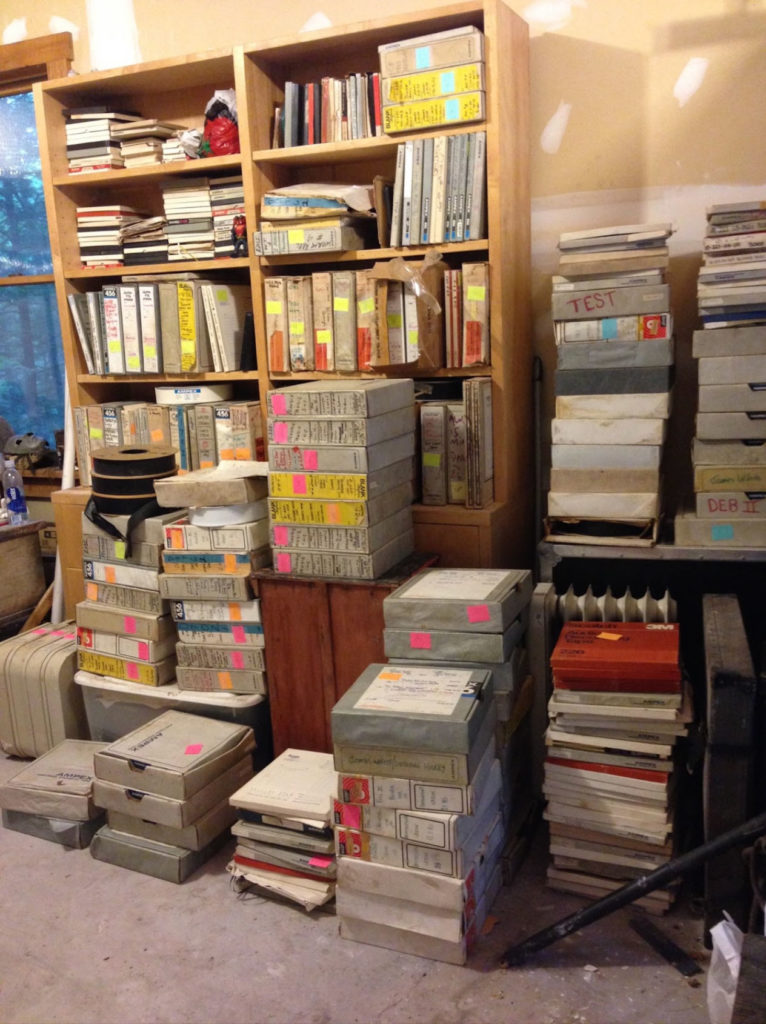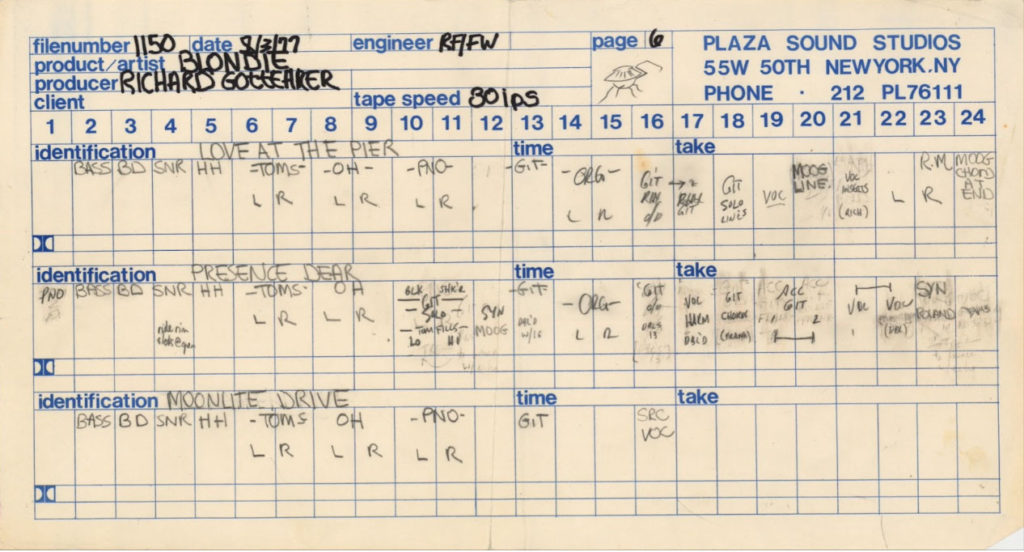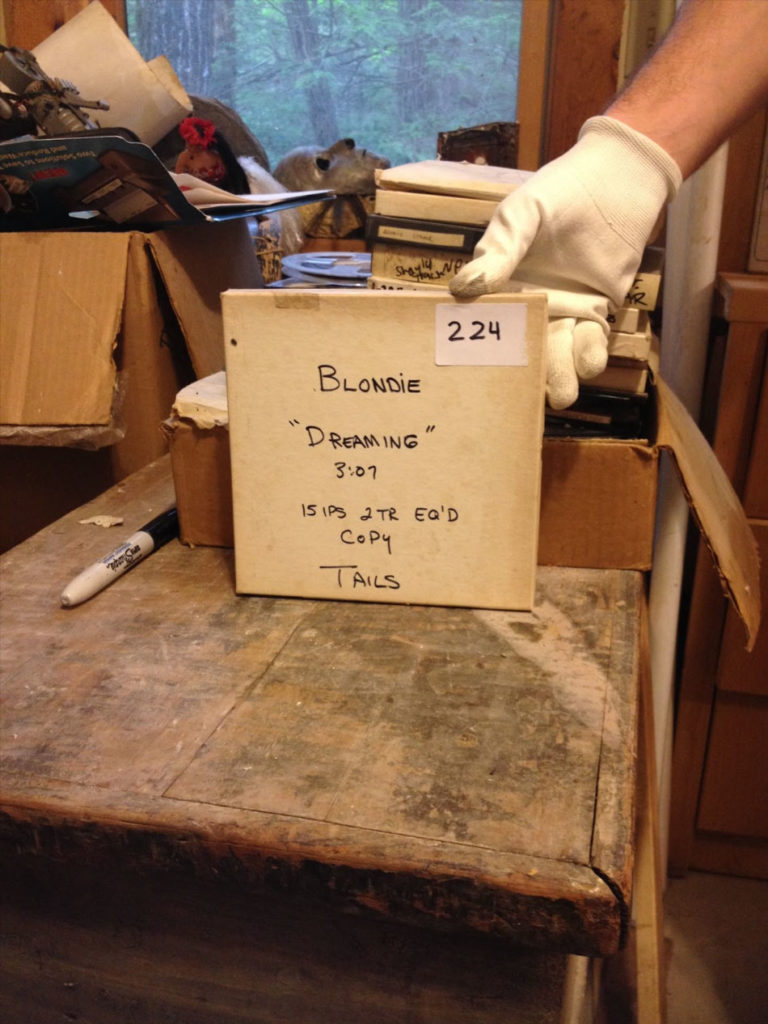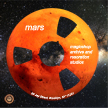Blondie: Against The Odds 1974-1982 The story behind the sound
Blondie is a group…of extraordinary artists. Years of searching, months of mixing and mastering, and days of decisions went into this box set to highlight the unique path the band traveled; from CBGB to MSG.
The good ones take a long time to put together and this project, six years in the making, started while Blondie was at the Magic Shop recording their album, Pollinator, in early 2016. One afternoon, Chris Stein stopped by one of the preservation and mastering rooms I had in the basement. I was working on the Caffe Lena box set at that time and he heard a great Dave Van Ronk track. He said, “What the fuck is this?!”
Blondie Audio Team
After I explained that the basement rooms of the studio were dedicated to historical projects, he said, “I have some Blondie stuff in my garage upstate. Do you wanna take a look at it? One thing, they got a little wet!” I jumped and said, “You bet!” Along with Magic Shop mastering engineer, Jessica Thompson, and Blondie manager, Tommy Manzi, we put together a road trip to Chris’ garage.
I’m a big fan of Ken Shipley and his Numero Group record label so I called him to see if he wanted to be part of the team. He saw immediately the possibilities for the Blondie treasures we might uncover and joined in for the road trip.

As soon as we opened the garage doors two things became crystal clear – one, there was an amazing amount of unheard and unreleased Blondie music and two, the tapes and memorabilia had all been underwater for some time. Although at this time the tapes were dry, most had dormant mold residue while some were still growing mold. Jessica and I were not worried though – analog tape is a very resilient format and with proper triage techniques we knew we could play them.
After a great visit and tour of Chris’ house and studio, we loaded the truck with tapes and headed back to NYC to assess the collection. Once Tommy Manzi gave me the word, we started work. Throughout this adventure Tommy has been a fierce advocate for the band.
Former Magic Shop and now Stanford University audio engineer, Kabir Hermon, was put in charge of baking, cleaning and transferring what we found. He did his usual stellar job and over 100 reels were archived to 192 kHz, 24 bit preservation digital masters. Kabir made rough mixes of all the multitrack reels as well. Once the preservation transfers of the tapes were completed, Ken, Tommy and I began listening. It became clear that this was a major discovery and that we should find a way to release as much of the music as we could.

What followed for me was a deep dive into the world of Blondie recorded history. Over the course of almost three years, I searched through the band’s Universal archives in London, New York and Los Angeles looking for and finding unreleased songs, sketches, first takes, outtakes, and ideas. Thanks to the hard work of Kristina Fox at Universal Music Group (UMG), I found many of the tapes in the Universal archive that we wanted. Tape sources in the US were transferred at Pacific Mastering while sources housed in the UK were digitized at Abbey Road Studios. All tapes were transferred to 192 kHz, 24 bit digital files. Magic Shop engineer, Alex Slohm, did rough mixes of these newly uncovered reels so we could evaluate the songs. After we had a chance to listen to all the rough mixes and other newly discovered material, we started narrowing the collection of songs that were going to end up on the finished set.

The final mixes for all the unreleased tracks on the box set were done by Tom Camuso and me before and during the summer lockdown of 2020. Tom has a vintage Neve console at his “Studio E” in Brooklyn which sonically matches with these late 1970’s and early 80’s tapes. There’s no one I would trust more to mix these tracks. After completing a mix, we would send mixes to the band during the process for their input and approval.
I’m not a fan of remixing classic albums and my fellow producers agreed; the six classic Blondie albums should not be remixed, only remastered. For that, we needed to go back to the original master tapes. The decision to create new transfers and then remaster the six studio albums served several purposes. First, the existing digital album masters were not at the 192 kHz sample rate we were using for all the new material and we wanted everything to be as close sonically as possible. Next, the existing digital masters were more compressed and digitally limited than we were comfortable with. This makes it hard to get a good cut for the vinyl masters. We also wanted to correct the fact that on many of the later CD issues of Parallel Lines, the “disco version” of Heart Of Glass was used instead of the original album version. Finally, if there ever was a time to remaster those six records, this was it.
Once song selection, mixing and new transfers of the studio albums were completed, the entire project was then sent to Michael Graves at Osiris Studio in Los Angeles for restoration and mastering. Michael has a wonderful ear for keeping the mastering true to the music’s original intention and vibe. He does this while also adding a level of revealing clarity, a trick that will make anyone familiar with these iconic Blondie songs take notice and find something new to enjoy. For the six studio albums, we sourced the original vinyl pressings to use as references. The overall tone for each studio album was then carried over to that era’s bonus material. One of the things we wanted to correct for this new set was undoing some of the over compression that crept in over the years with the later CD reissues. Maintaining the dynamic range present in the original recordings was a key goal for this project and Michael nailed it.
I happened to be with Michael in Los Angeles while he was mastering some of the studio album material. It was the spring of 2020 and we were working on an unrelated archive project together. What was supposed to be a two week visit turned into a four month stay due to the COVID-19 outbreak. I have to say, working on these Blondie recordings was a nice diversion from what was happening in the world. Michael’s mastering room was designed by George Augspurgher and the music sounded fabulous in there.

As I mentioned earlier, the physical state of some of the analog tapes in Chris’ garage was problematic. Michael is one of the best restoration specialists around so we were glad to have him work on the damaged material. For example, there were several 4-track demos that required speed correction (such as Ring of Fire) before they could be mixed, and he was able to dial the correction in quickly so we could keep going with the mixing.
After the band approved all of Michael’s mastering, he sent the CD, digital, and vinyl masters out to be manufactured and distributed. A special thanks to Abbey Road cutting engineer Geoff Pesche, for his hard work, great ears, patience and input on this very complicated project.
After six years, I’m delighted to have this deep dive into the musical lives of this iconic band released. I’m proud to say that Blondie: Against The Odds 1974-1982 is the first band-authorized and band-approved release of music from their archive.
Enjoy!!
Steve Rosenthal, August 2022
The Blondie Audio Team
Steve Rosenthal – Producer
Ken Shipley – Producer
Tommy Manzi – Producer
Michael Graves – Mastering engineer, restoration
Tom Camuso – Mixing engineer, restoration
Kabir Hermon – Analog to digital transfers
Jessica Thompson – Archive assessment, photos
Alex Slohm – MARS archive
Kristina Fox – UMG Archivist
Geoff Pesche – Abbey Road Studios

